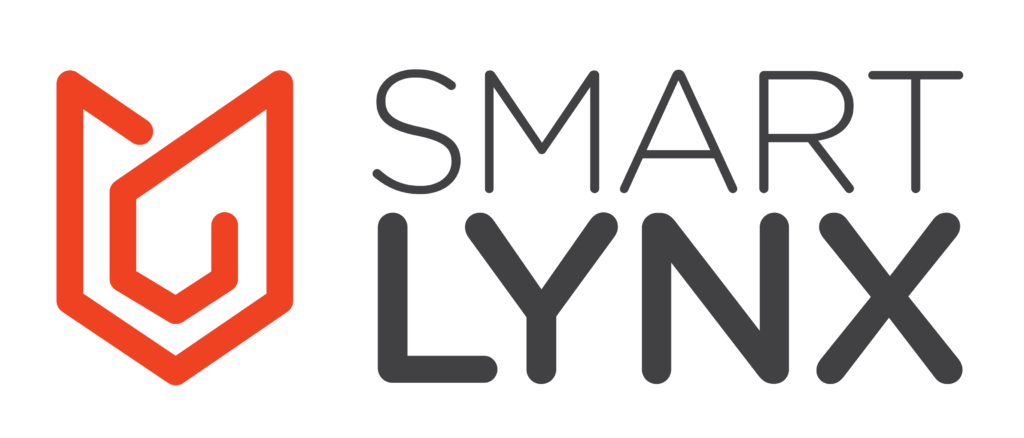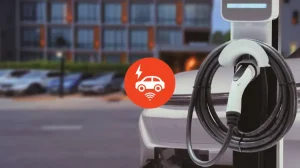The UN predicts that 70% of the world’s population will live in cities by 2050. That means an average of 1.5 million people a week are moving to urban areas worldwide. This is both a challenge and an opportunity for cities, as there is no other way to manage such growth but through technological development. Smart city solutions are the key to a liveable urban future, enabling a modern, but above all human-centred approach that benefits all stakeholders. The aim of this blog post is to present the theoretical background to the concept of smart cities and to examine the concrete benefits of smart city projects by giving practical examples.
The smart city concept
When we hear the word smart city, many of us might think of a high-tech city where digital technologies simplify the everyday lives of city dwellers. With this association, we are not so far off the mark, except that a smart city does not look very different from a regular city. The difference lies more in the way the city works. A smart city is defined as a municipality that uses innovative information and communications technology (ICT) to continuously improve its urban environment, infrastructure, economic efficiency and the quality of services provided. It does this in a sustainable way and with the active involvement of its citizens.
In fact, being a smart city is a never-ending process that requires continuous improvement, adapting to the opportunities offered by digital technologies. For a successful smart city strategy, it is of paramount importance to take into account the needs of all stakeholders, but especially of the citizens.
Smart city indicators: six fields of action
As we have seen above, the term “smart” includes technology as a tool, but a well-designed smart city strategy is not limited to technology alone.
According to the literature, municipalities need to make progress in six key strategic areas to become smart cities: smart governance, smart mobility, smart environment, smart economy, smart living and smart people. These are the so-called smart city indicators, which measure the state of development of cities and the impact of improvements. Within one field, further subcategories can be developed to address specific challenges and development opportunities in the city. Without getting lost in the details, we will briefly describe the main points of each field, with a special focus on smart mobility.

Smart governance
It is about strengthening the relationships and interactions within a municipality between government and all stakeholders – citizens, businesses and civil society organisations. It is essential that the decision-making process is open, transparent and participatory. In addition, decision support based on information and communications technology has an important role to play and will be discussed in more detail in a later chapter.
An interesting example is the Hello Lamp Post project, which asked citizens for their opinions on issues affecting the future of their neighbourhoods by using QR codes on art installations in Utrecht. The data collected was used by policy-makers and urban planners to improve the area, involving citizens in the decision-making process.
Smart environment
Aims to improve energy efficiency and environmental conditions in cities, with measures such as improving air quality. Among others, this field includes the management of irrigation systems, waste, lighting, weather and meteorological stations.
At the University of Idaho, sensor-based smart trash cans are used to monitor the waste level. Thanks to the technology, the waste management team has halved its work time and fuel consumption by using real data to determine the optimal route for trash collection.
Smart economy
Its main objectives are to improve the overall business climate and make the city more attractive to entrepreneurs and investors. It supports innovative and sustainable economic growth and competitiveness. Specific examples include ICT platforms, open data provision and the operation of city labs.
How does it look in practice? New York City has created a platform for small and medium-sized businesses called Business Atlas. It helps businesses decide which location might be the best fit for their business. The interactive map provides information on demographics, income, and even pedestrian traffic to help businesses determine what type of business would thrive in a given area. This is all key information before making a big investment.
Smart living
Processes and ICT solutions that support urban safety, healthcare, cultural, leisure and community activities. It aims to improve the overall quality of life of citizens.
This is precisely the aim of Healthy Chicago 2.0. One of its interesting projects was to reduce and prevent food poisoning in restaurants. The city government used an algorithm to monitor public Twitter messages about food poisoning, so that the city food inspectors could target the more problematic restaurants.
Smart people
This area refers to measures that help increase the overall competitiveness of the workforce. For example, improving education is a prerequisite for more efficient ICT developments and adaptation of new technologies.
To take a Hungarian example, the Budapest University of Technology’s Faculty of Electrical Engineering has a smart city specialisation, which educates the smart city professionals of the future.
Smart mobility
Smart mobility is at the heart of smart city solutions. It covers all urban development projects that use information and communications technology to deliver a more sustainable, efficient and safer urban mobility. To go deeper into the subject, we have summarised the main objectives in a few points:
- Improving the transport network and traffic management systems.
- Improving road safety and reducing traffic accidents.
- Providing traffic information and minimising travel time.
- Ensuring environmental and economic sustainability.
- Overall, a more liveable urban environment for citizens.
Having understood the theoretical background of the topic, it is reasonable to ask what solutions exist in real life. To answer this question, we only need to look at our immediate surroundings, as many large cities have a number of useful smart mobility solutions already. In Budapest, for example, there are car-sharing services such as ShareNow or there is also the MOL Bubi community bike-sharing system. On-street smart parking is another excellent example, which is perhaps less visible than the services mentioned above, but not at all inferior in terms of usefulness.
For most motorists, the stress of driving around for long minutes in congested traffic looking for a parking space does not need to be described. A well-functioning on-street smart parking system provides a direct solution to this problem, but its positive benefits go far beyond. The system is all about making parking occupancy data available to motorists and city authorities, thereby optimising the efficiency of parking operations, parking space utilisation and journey times.
As discussed above, smart mobility has sustainability goals, and smart parking certainly meets this objective. According to a WHO report, air pollutants are responsible for the deaths of two million people every year and 90% of the world’s population lives in places that do not meet WHO air quality guidelines. Smart parking reduces overall emissions by shortening journey times, as motorists can reach their destinations using less fuel.
The economic benefits of the system are shared not only by motorists but also by local authorities. Motorists can save on travel expenses by reducing fuel costs, while municipalities can generate more revenue by increasing the utilisation of parking spaces.
Another smart mobility solution worth mentioning is the sensor-based traffic monitoring. Collecting data on traffic offers the possibility to optimize traffic flows in the city. City authorities can use real traffic data to make decisions on traffic management issues, thus reducing congestion and making the environment more liveable for city dwellers.
Smart cities – smart municipalities
By implementing smart city solutions, municipalities are also becoming ‘smart’. They gain valuable data that can be used to further improve the efficiency and profitability of their operations.
A positive example is Budapest’s 5th district, which is using sensor-based smart parking and traffic monitoring to revolutionise transport in the district. 100% of the district’s on-street parking spaces, a total of 5,200 spaces, have been equipped with parking sensors. The sensors send real-time information on the occupancy status of the parking spaces, which can be monitored by motorists via the Parker app and by the district’s management via the Smart Parking Dashboard. Sensor-based traffic monitoring also supports data-driven decision making on traffic management issues.

The dashboard provides parking and urban development professionals with useful statistics such as average parking time, number of parking incidents, occupancy rate and the distribution of parking incidents by length. These are all key data for improving the efficiency of operations.
As mentioned above, the smart parking app also allows motorists to easily find out the exact location of free on-street parking spaces. This ensures a consistent and high occupancy rate of parking spaces, which also means an increase in parking revenues.
The 5th district of Budapest can proudly claim to have taken a giant step towards becoming a smart city. Together with Smart Lynx, it has developed a parking system that positively impacts the daily lives of motorists and residents of the district. The air has become fresher, with an average weekly reduction of 2885 kilograms of carbon dioxide emissions. Lower noise pollution and a reduction in the number of motorists looking for free parking spaces also improve the living conditions of residents.
Conclusion
Smart city projects are the solution to the urban challenges of today and tomorrow. Smart solutions are on the rise, giving municipalities the opportunity to build systems that are fully tailored to the needs of their citizens. It’s no exaggeration to say that parking problems are affecting more and more cities, to which Smart Lynx’s on-street smart parking is the perfect answer.





